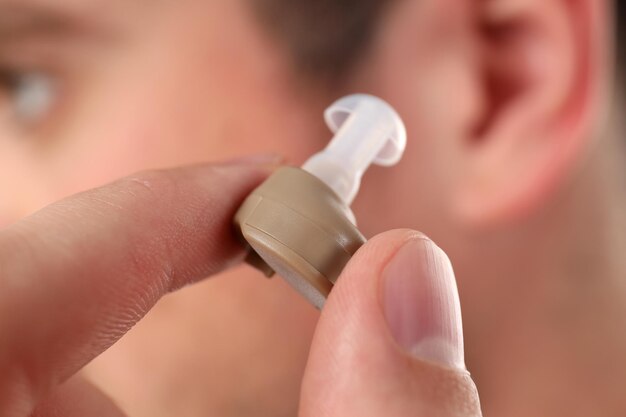How Much Do Hearing Aids Cost? Unpacking Options, Factors, and Tips
Navigating the world of hearing aids can be a bit overwhelming, especially when trying to understand their costs. These essential devices play a critical role in enhancing the quality of life for millions by improving hearing capabilities. However, the price of hearing aids can vary widely, which leads many to ask: how much will it really cost? In this guide, we’ll explore not only the expense involved but also offer insights into related factors and considerations, ensuring you’re well-equipped to make informed choices. 🎧
Understanding Hearing Aid Prices
What Determines the Cost of Hearing Aids?
Several factors affect the price of hearing aids, making their cost structure complex. Here's a breakdown of the major determinants:
Technology Level: Higher-end hearing aids offer advanced features like wireless connectivity, noise reduction, and more precise sound processing, which can significantly affect the price.
Brand: Different manufacturers set varying price points. While some are known for premium, innovative devices, others may cater to more budget-conscious consumers.
Customization: Hearing aids tailored to fit the specific contours of your ear or programmed for a particular hearing loss profile might come at an increased cost.
Added Services: Many purchases include follow-up appointments, fitting services, and ongoing maintenance. These value-added services can impact overall cost.
Geographical Location: Prices can fluctuate based on where you live due to variations in market demand and the cost of living.
Average Cost Range
Hearing aids range significantly in price:
- Basic Models: These can start from a lower price point and cover essential functions like amplification and simple noise reduction.
- Mid-Level Models: Typically priced higher, these include additional features like directional microphones and better sound quality.
- Premium Models: Positioned at the top of the price spectrum, they offer the best technology, including multiple program settings, Bluetooth connectivity, and automatic adjustments.
Exploring Different Types of Hearing Aids
Different types cater to varying needs and preferences. Here’s a closer look:
Behind-the-Ear (BTE)
- Cost Implications: Generally more affordable, partly because they are easier to handle and accommodate a range of hearing loss severities.
- Pros: Durability and ample space for features.
- Cons: Visibility, which might be a factor for some users.
In-the-Ear (ITE)
- Cost Implications: Slightly higher due to customization for individual ear canals.
- Pros: Discreteness and ease of use.
- Cons: More prone to earwax buildup.
Receiver-in-Canal (RIC)
- Cost Implications: Comparable to BTE, often varying depending on technology inclusion.
- Pros: Comfortable design and lesser visibility.
- Cons: May require more maintenance.
Completely-in-Canal (CIC)
- Cost Implications: Usually higher due to advanced miniaturization and customization.
- Pros: Least visible and natural sound quality.
- Cons: Limited space for batteries means less power and shorter lifespan.
Insurance and Financial Assistance
Does Insurance Cover Hearing Aids?
Coverage greatly varies:
- Private Insurance: Some plans offer full or partial coverage, though this is not the norm.
- Medicare: Partially covers tests but not devices, as hearing aids are categorized under personal-use items.
- Medicaid: Coverage policies differ state-by-state, often providing more support than Medicare.
- Veterans Affairs: Often provides full coverage for eligible veterans, including assessments.
Exploring Financial Assistance Programs
If insurance doesn’t cover hearing aids, consider:
- Nonprofit Organizations: Some provide devices at reduced costs or grant aids for low-income individuals.
- Charitable Programs: Often assist children and young adults.
- Flexible Payment Plans: Many providers offer monthly payment structures to spread out costs.
Maximize Your Investment: Practical Tips
Choosing the Right Device
- Assess Your Needs: Consider lifestyle, severity of hearing loss, and personal preferences.
- Use Trial Periods: Many vendors offer trial periods to ensure satisfaction before committing.
- Consult Professionals: An audiologist can provide personalized advice for free or nominal fees.
Maintenance and Longevity
- Regular Cleaning: To avoid earwax buildup and extend device life.
- Routine Check-Ups: Ensure that settings are optimized and working correctly.
- Storage and Handling: Proper storage when not in use is crucial to maintaining device integrity.
📝 Quick Reference Summary
- 💰 Cost Factors: Technology, brand, customization, services, and location.
- 🔍 Average Range: From basic to premium, prices reflect features and technology levels.
- 👂 Types of Hearing Aids: BTE, ITE, RIC, CIC – each with unique benefits and price points.
- 🔒 Insurance Options: Vary widely, with better coverage via Medicaid or VA in some cases.
- 📋 Assistance Programs: Research nonprofit and charitable options for potential financial relief.
- 🛠️ Maintenance Tips: Regular cleaning, check-ups, and proper storage are essential.
Navigating the realm of hearing aids can be complex, but understanding these factors and options can help demystify the process. With the right information and support, you’re better poised to make a choice that suits your needs and budget. Whether you’re investing in hearing aids for yourself or a loved one, remember that the true value often lies in the enhanced quality of life they provide.

Related Topics
- a Plus Hearing Aid Centers
- a Real Pain Showtimes Near Centerville
- Are Airpods Bad For Your Ears
- Are Apple Second Generation Airpods Hearing Aids
- Are Audien Hearing Aids Just Amplifiers
- Are Costco Hearing Aids As Good As Others
- Are Costco Hearing Aids Good
- Are Hearing Aid Domes Interchangeable
- Are Hearing Aid Subscriptions Worth It
- Are Hearing Aid Tax Deductible